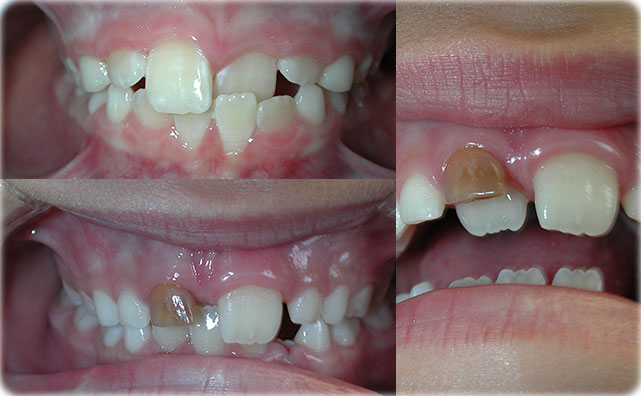Are you or someone you know struggling with a crossbite and looking for the best treatment option? We will explore the various treatment options available for correcting crossbites and help you make an informed decision. A crossbite can be both aesthetically and functionally challenging, affecting not only your smile but also your overall oral health. With so many treatment modalities on the market, it can be overwhelming to determine which one is the most suitable for your unique needs.
From traditional braces to clear aligners and even surgical interventions, we will break down the pros and cons of each method, considering factors such as effectiveness, duration, comfort, and affordability. By the end of this comparison, you will have a clear understanding of the different treatment options available and be ready to embark on your journey towards a beautiful and healthy smile. Don’t let a crossbite hold you back any longer – let’s find the perfect treatment option for you!
Understanding Crossbite: What is it and why is it important to treat?
A crossbite occurs when the upper and lower teeth do not align properly when the mouth is closed. This misalignment can result in functional and aesthetic issues. It is important to treat crossbites as they can lead to a range of dental problems, including tooth decay, gum disease, and even jaw joint disorders. Additionally, untreated crossbites can also cause facial asymmetry, affecting the overall appearance of the face.
Types of crossbite:
Posterior Crossbite
A posterior crossbite occurs when the upper teeth are positioned inside the lower teeth. This type of crossbite can affect both the back teeth and the bite pattern, causing discomfort and potential damage to the teeth and jawbone.

Anterior Crossbite
An anterior crossbite, on the other hand, involves the lower front teeth overlapping the upper front teeth. This can result in aesthetic concerns, as well as difficulty in biting and chewing properly

Mixed Crossbite
A mixed crossbite is a combination of posterior and anterior crossbites, affecting both the back and front teeth. It is important to identify the specific type of crossbite in order to determine the most appropriate treatment method.

The consequences of untreated Crossbite: Dental problems and facial asymmetry
If left untreated, crossbites can lead to a range of dental problems. The misalignment of the teeth can cause uneven wear of the tooth surfaces, leading to premature tooth decay and gum disease. Additionally, the abnormal bite pattern can put excessive stress on the jaw joint, resulting in temporomandibular joint (TMJ) disorders and chronic jaw pain. Apart from dental complications, untreated crossbites can also cause facial asymmetry. The misalignment of the teeth can affect the overall appearance of the face, leading to an uneven smile and imbalanced facial features. This can have a negative impact on an individual’s self-confidence and overall quality of life.
Traditional Orthodontic Treatments: Braces and Expanders
Traditional orthodontic treatments, such as braces and expanders, have long been used to correct crossbites. Braces consist of metal brackets and wires that apply gentle pressure to move the teeth into their proper position. Expanders, on the other hand, are devices that widen the upper jaw to correct crossbites caused by a narrow dental arch.
Braces are highly effective in addressing various types of crossbites, including posterior, anterior, and mixed crossbites. They offer precise control over tooth movement and can be customized to suit individual needs. However, braces can be uncomfortable and aesthetically unappealing, especially for adult patients.
Additionally, the treatment duration with braces can range from several months to a few years, depending on the severity of the crossbite. Expanders are particularly useful for correcting posterior crossbites caused by a narrow upper jaw. By gradually widening the arch, expanders create more space for the teeth to align properly. While expanders can be effective, they may cause temporary discomfort and speech changes during the adjustment period. It is essential to consult an orthodontist to determine the most suitable treatment option based on the specific type of crossbite.
Clear Aligner Therapy: How it Works and its benefits
Clear aligner therapy is an orthodontic treatment, offering a discreet and comfortable alternative to traditional braces. When it comes to correcting crossbites, clear aligners have emerged as a highly effective solution.
How Clear Aligner Therapy Works:
Clear aligner therapy involves a series of custom-made, virtually invisible aligners that gradually and gently shift the teeth into their proper positions. The treatment begins with a comprehensive examination and the creation of a personalized treatment plan. Advanced 3D imaging technology is utilized to design a series of aligners that will guide the teeth to their ideal alignment.
Benefits of Clear Aligner Therapy for Crossbite:
Clear aligners are transparent, making them virtually invisible when worn. This allows patients to undergo treatment without feeling self-conscious about their appearance. Clear aligners are made from smooth, BPA-free plastic, eliminating the discomfort associated with metal braces. They can be easily removed for eating, brushing, and flossing, providing a convenient and hygienic treatment experience.
Before and After Clear Aligner Therapy

Conclusion:
Crossbites should never be ignored; prompt treatment is essential to prevent further damage. At All in One Dental, our experienced dentists are dedicated to correcting crossbites and improving oral health.
